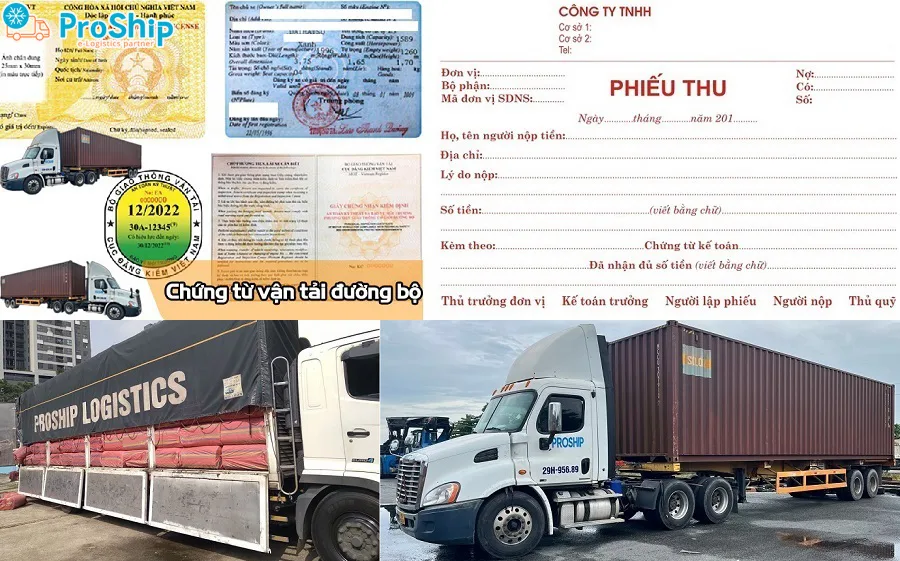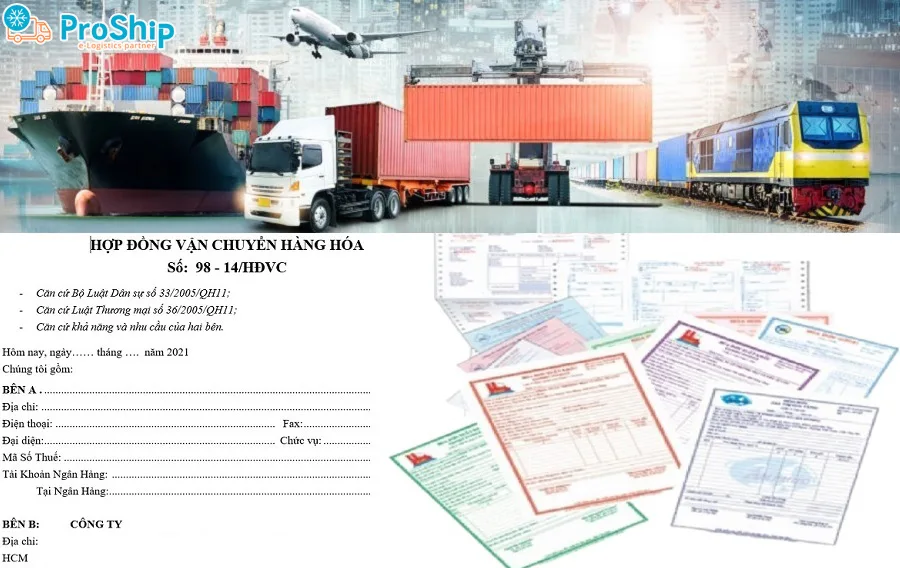x You do not have experience with shipping goods and wonder what a shipping document is?
x Individuals and businesses need to send goods to the province and need to find out what documents are needed when transporting goods?
x Do you want to know what documents and bills of lading are related to road, rail, sea, and air transport?
In the field of import and export, documents are like "passports" for goods to be identified and cleared through seaports and border gates. Below, at Proship.vn, we will list freight shipping documents that are quite commonly used today.
What is a freight transport document?
A freight document is a type of document that contains information about the goods being transported. Freight documents are often accompanied by goods on their way to the recipient.
Freight transport documents include documents certifying ownership of goods (such as bills of lading, invoices, warehouse receipts...) and other documents.
Documents required when transporting goods are used as evidence of acceptance and receipt of the goods for transport and can also serve as documents of ownership of the goods.

Currently, freight documents are often divided into 4 groups depending on the following form of transportation:
- Types of documents for transporting goods by Road;
- Types of Railway freight documents;
- Types of documents for transporting goods by sea;
- Types of documents for transporting goods by air.
>>See more: What does the set of import documents include?
Common and popular freight transport documents today
With many years of experience in Multimodal Transportation, Proship Logistics will list the commonly used types of freight for current transportation methods as follows:
Types of road transport documents
Road freight documents include:
- Documents of vehicle owner:
Driver's license, training certificate for transporting dangerous goods (if any); Business registration certificate,…
- Vehicle registration:
Vehicle registration certificate; Compulsory insurance certificate of the vehicle; Vehicle inspection certificate (with inspection stamp); Certificate of circulation for oversized and overloaded vehicles; Vehicle schedule tracking book (for vehicles with fixed routes).
- Road transport contract:
It is one of the important types of transport documents. A transportation contract represents the parties' agreements on the quantity and volume of goods to be transported, time and place of delivery, payment time, form of payment, freight, and delivery method. goods, rights and obligations of the parties and other agreements.
- Fee receipt:
A freight receipt is a type of document created by a transport unit, used to document the collection and payment of freight and services, and calculate the total value of transportation and services into money.
- Shipping papers:
A type of document confirming that goods have been received and are being shipped. Shipping notes can be used instead of invoices and delivery notes.
- Travel documents:
A type of document issued for each shipment to serve as documentation during the transportation process. Travel documents are used to record the work assigned to the driver, to account for related costs, and to track incidents on the road. At the same time, the Travel Document is used for the driver to deliver goods in accordance with the shipping document to the owner.

Types of railway transport documents
Freight invoice (issued by railway transport enterprises) is a popular type of railway freight transport document today. Accordingly, this is considered a goods delivery document between the railway transport business and the transport charterer, and is evidence of dispute resolution.
The goods dispatch invoice is issued by the railway transport business and is delivered to the transport hirer after the transport hirer delivers the goods; This invoice must be signed by the transport charterer or the person authorized by the transport charterer.
Types of sea transport documents
- Captain's receipt:
This document related to the shipment of goods is issued to the shipper or shipper confirming that the ship has received the goods (the mate is the person in charge). When this receipt document is issued, it means the goods have been received and released onto the ship.
- Bill of lading:
An extremely important document issued by the representative or carrier of the goods to the consignor when the goods have been received for loading or loaded onto the ship. The ocean bill of lading is considered evidence of the contract of carriage and evidence of goods transactions.
- Cargo declaration:
The document is prepared by the Agent at the port of loading and is considered a list of goods that have been loaded onto the ship and transported to another port.
- Inventory sheet:
Is the original document of the quantity of goods loaded onto the cargo ship.
- Cargo loading chart:
Is a detailed transport document drawing, depicting the cargo on board with a separate symbol.
- Instructions for loading goods:
This directive is drawn up by the shipper and sent to the port authority and the shipping company.
In addition, some other types of documents are used such as commercial invoices, certificates of origin, weight certificates, etc.

Types of air transport documents
Necessary documents when transporting goods by air are divided into two types: House Bill of Lading and Master Bill of Lading.
- Bill of lading:
The forwarder issues a bill of lading to the retail shipper when receiving the goods. At that time, the goods owner will have a specific bill of lading to receive the goods at the destination. The bill of lading is intended to regulate the relationship between the store owner and the forwarder, and to receive goods between the two parties.
- Master bill of lading:
Issued by the airline. The master bill of lading is intended as a document for goods delivery between the forwarder and the carrier, and at the same time regulates the relationship between the forwarder and the air carrier.
Hopefully the above article will help you better understand Freight Transport Documents and what are the current popular transport documents such as sea, road, rail, and air. Regardless of the mode of transport, it is necessary to prepare all necessary documents when transporting goods according to regulations... Proship Logistics is a reputable Multimodal Transport unit - Contact immediately 0909 344 247 when needed.
